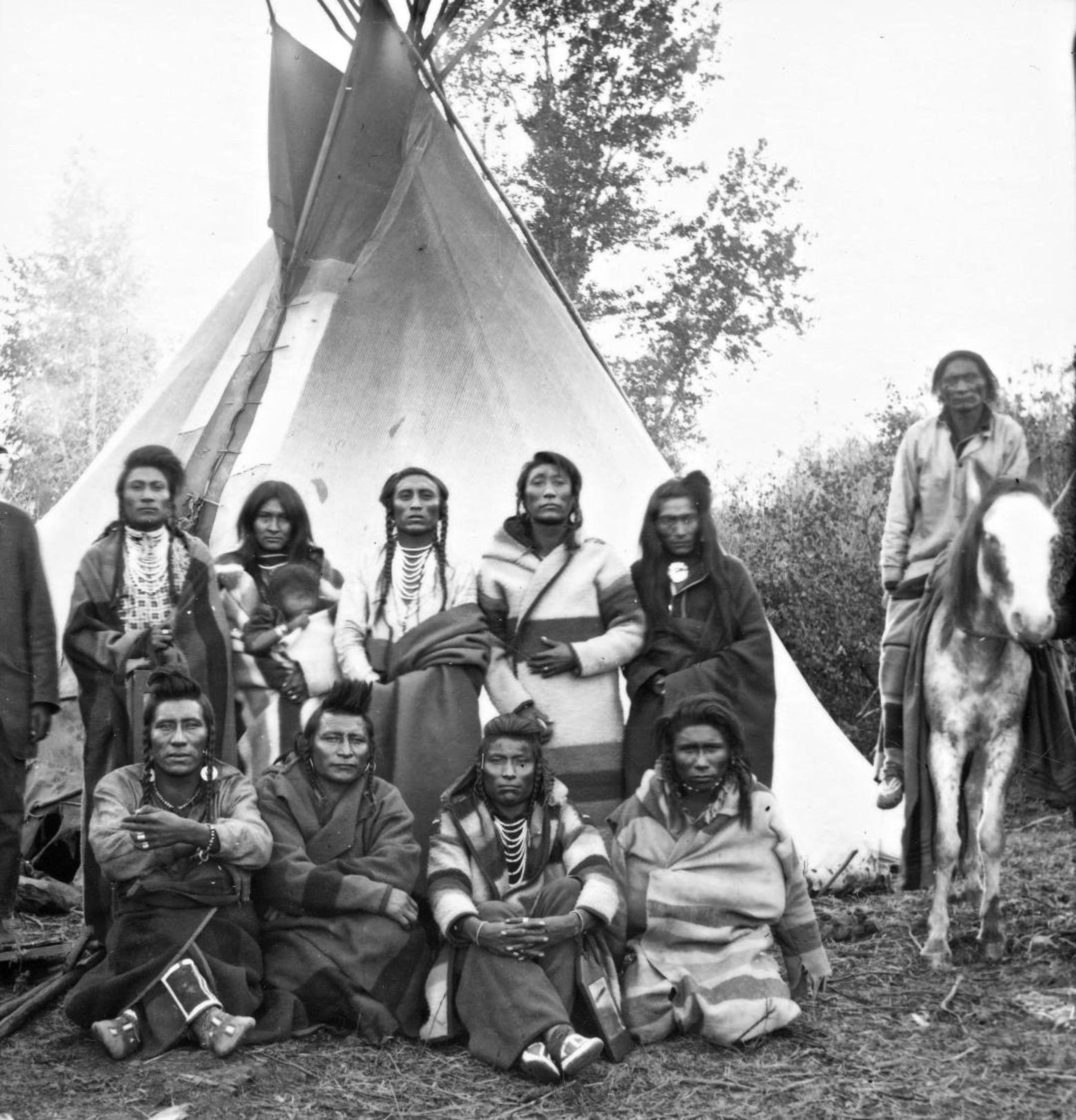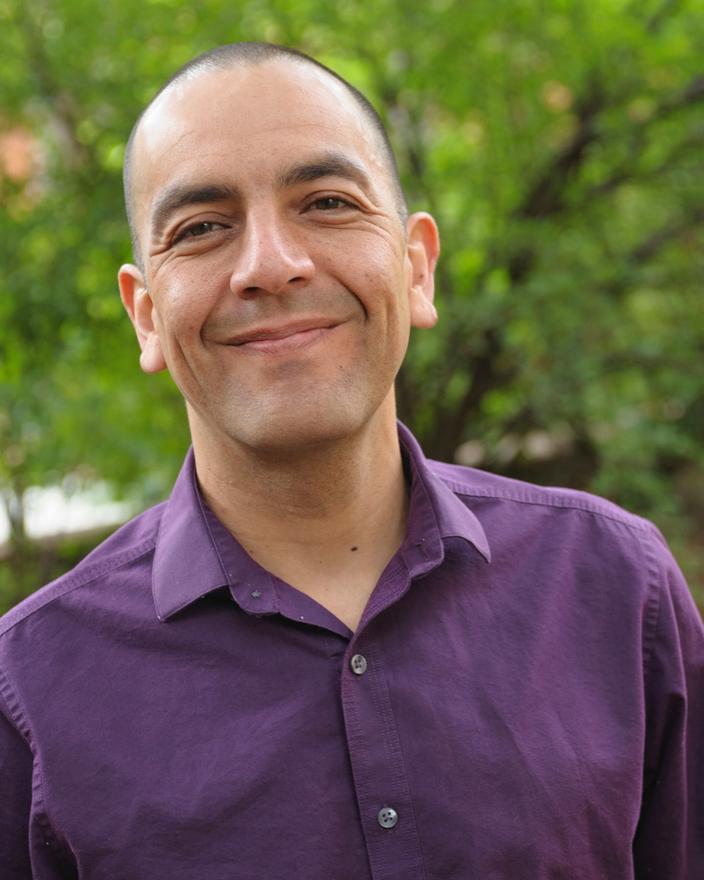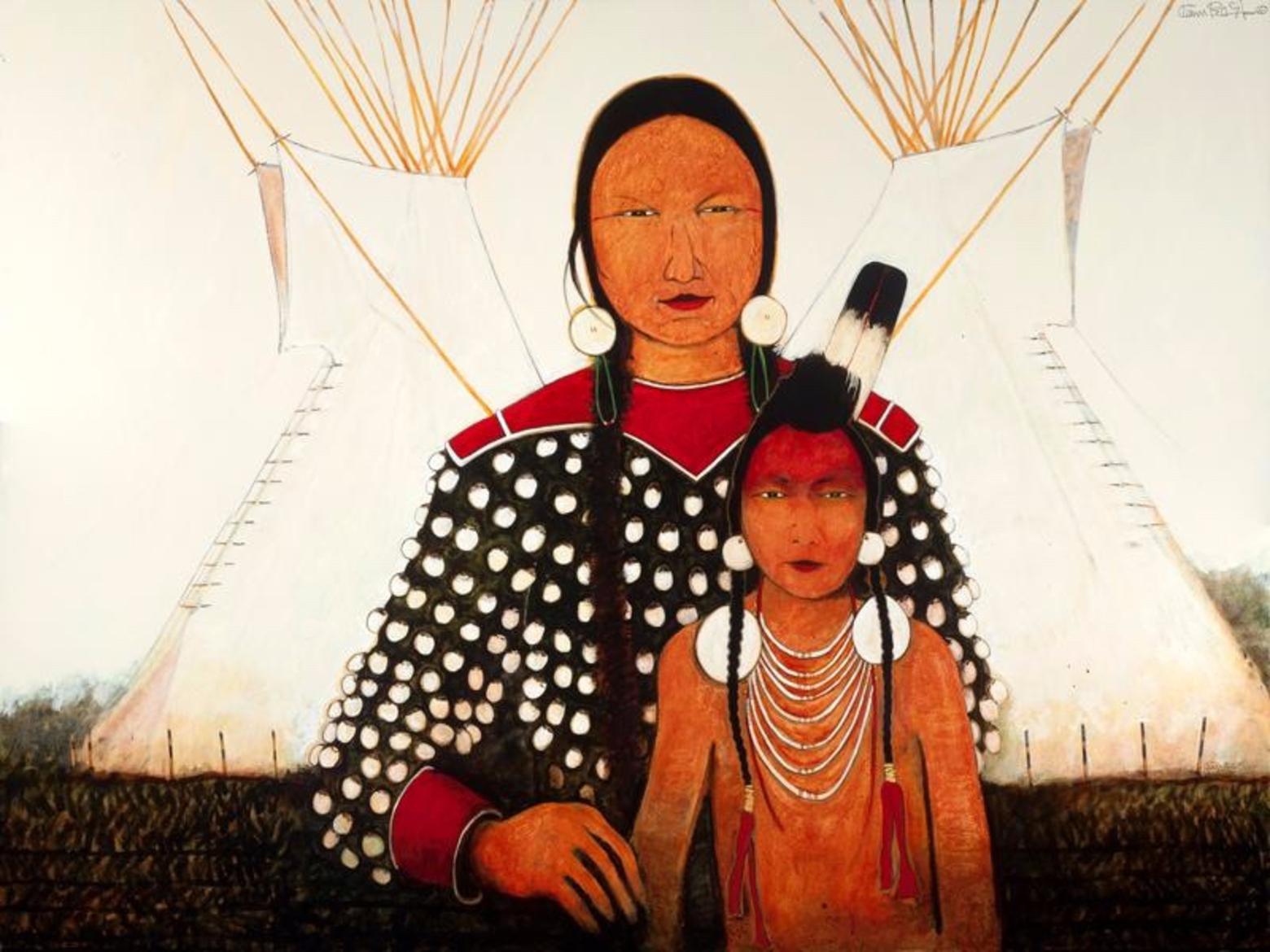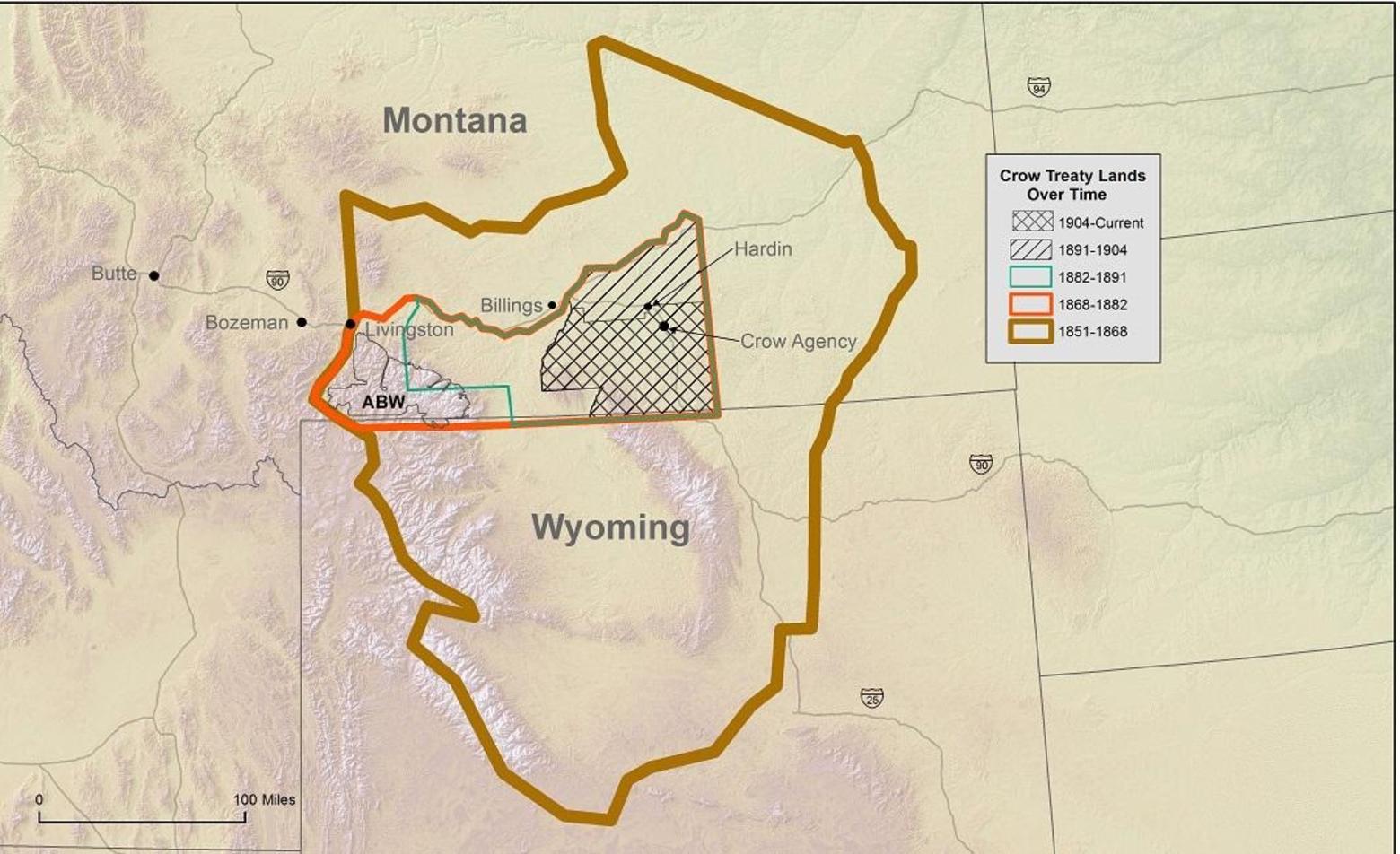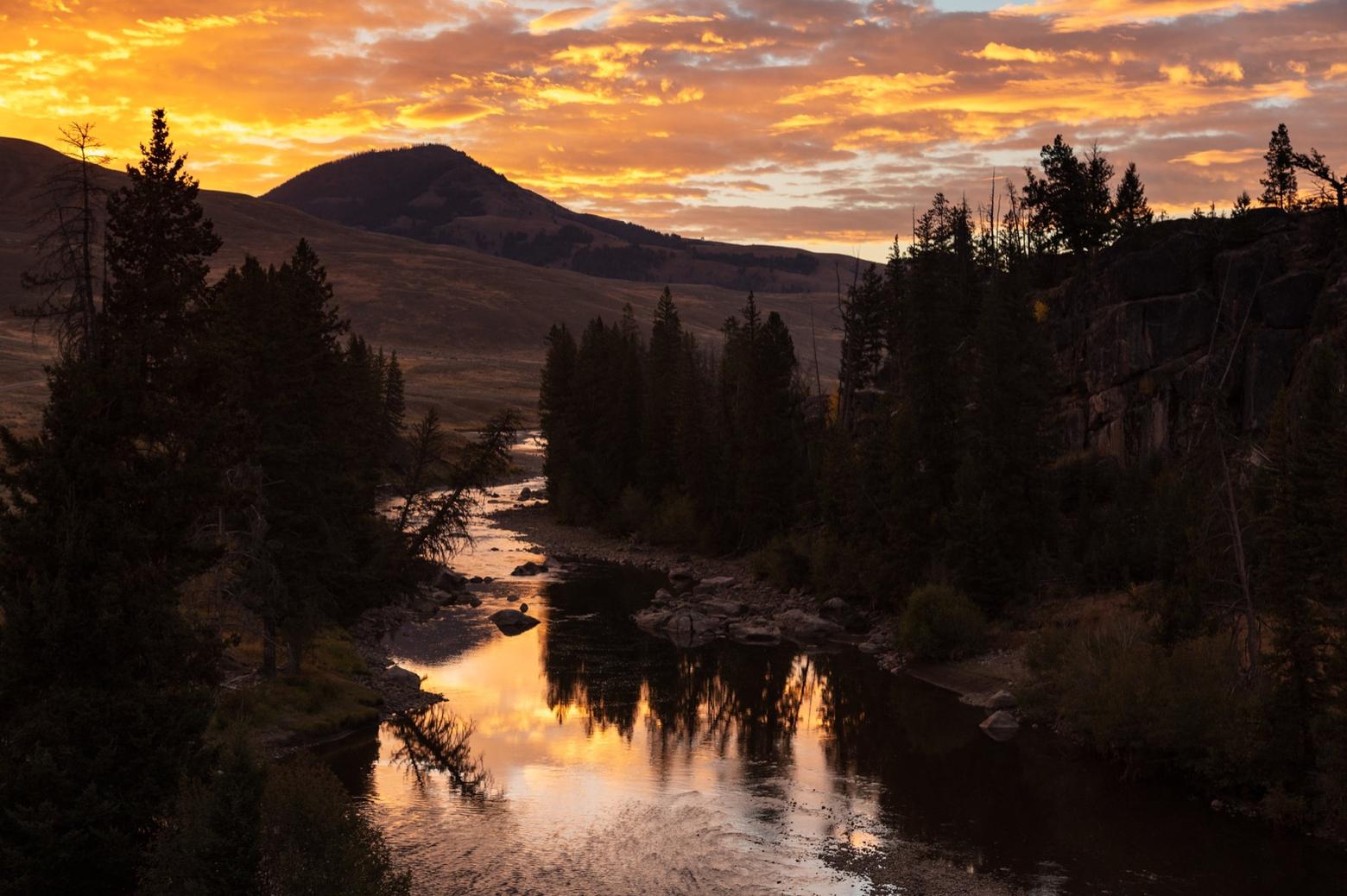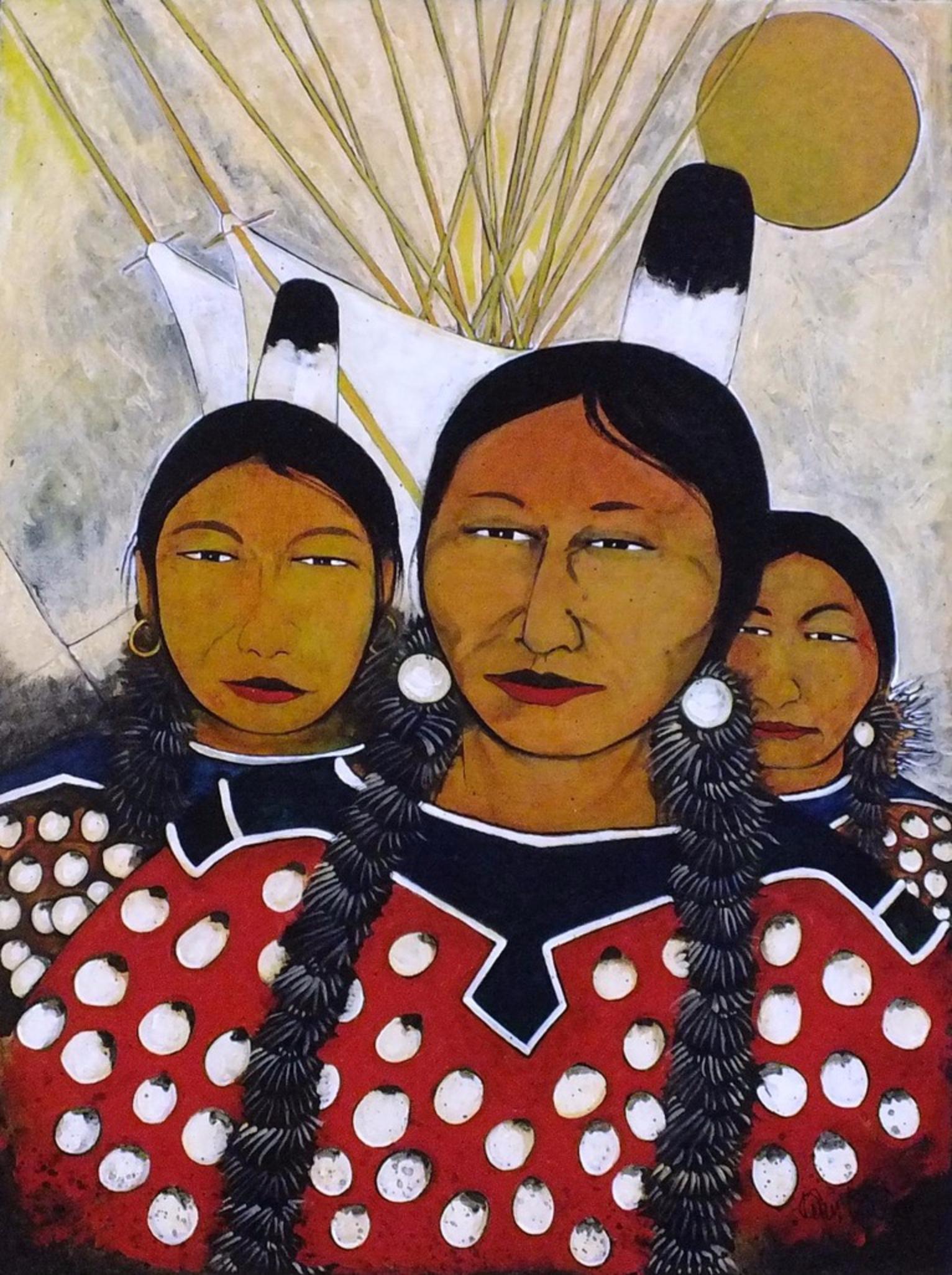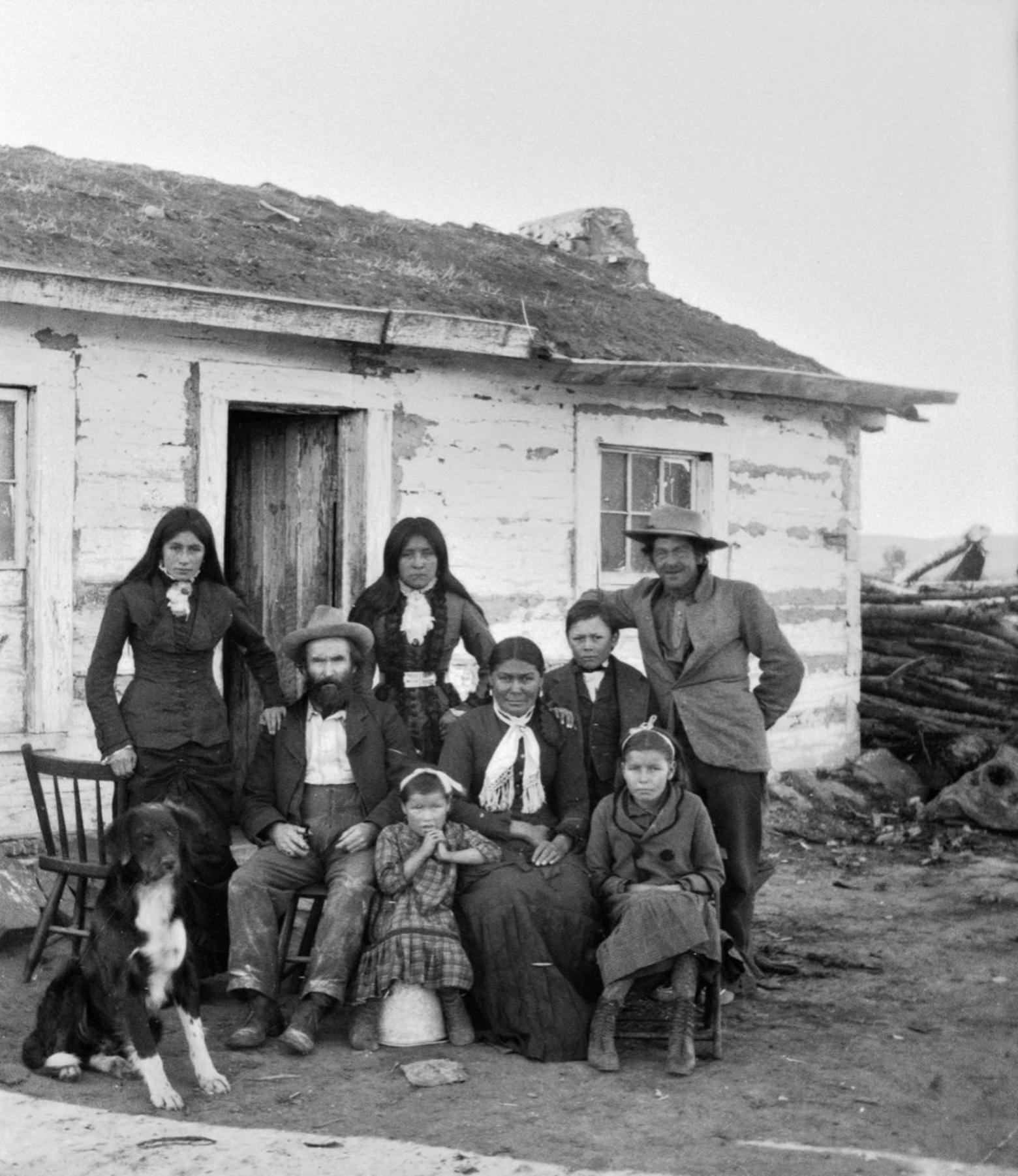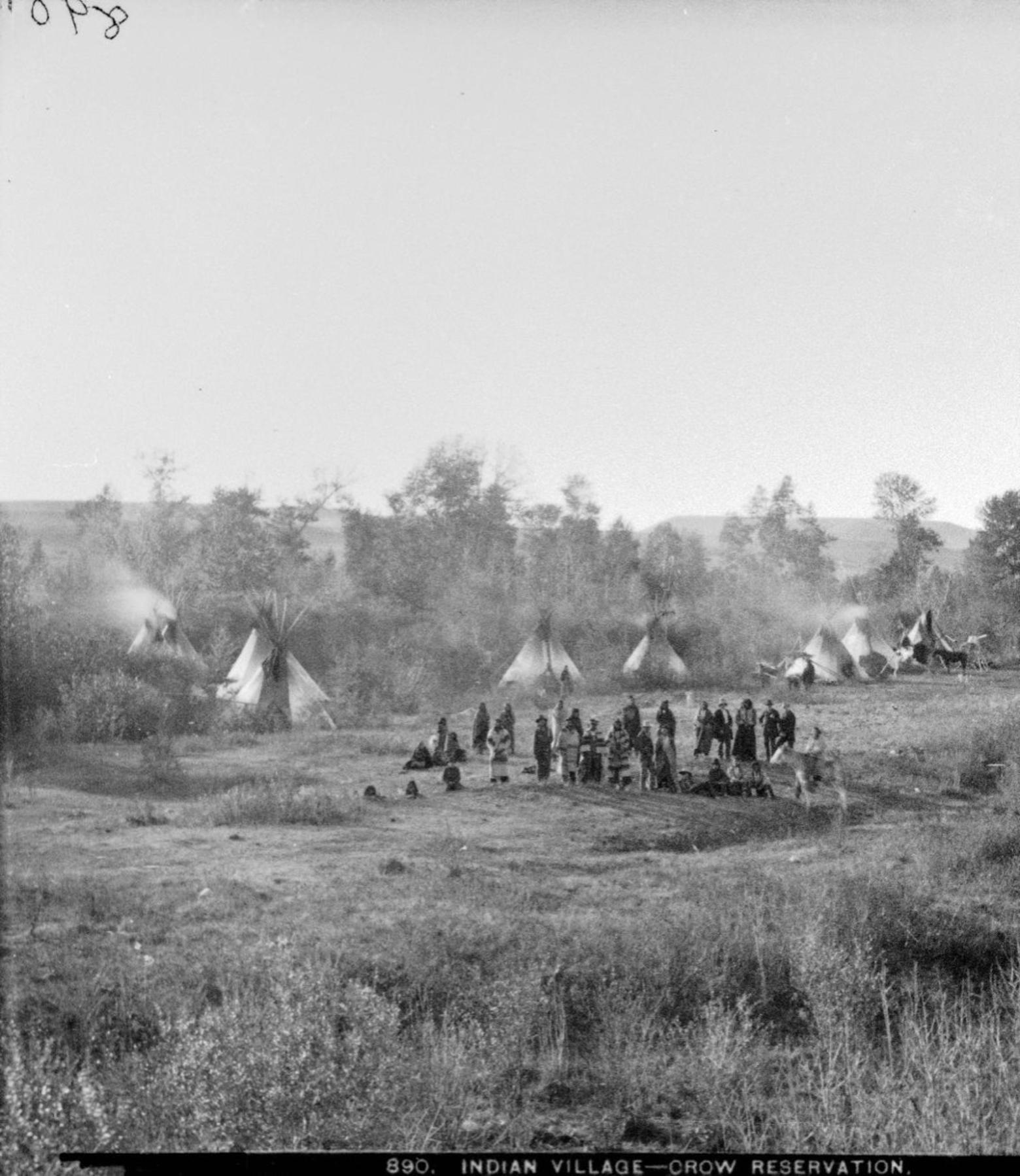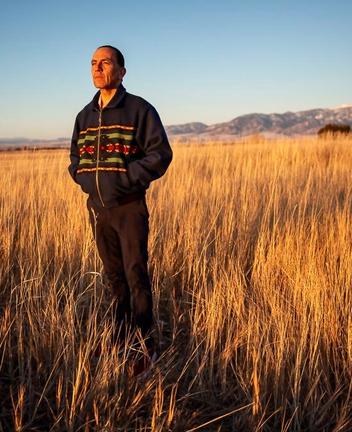Back to StoriesIn Home Land
November 28, 2019
In Home LandLong before the Absaroka-Bearthtooths became a wilderness and before Yellowstone was called 'wonderland,' they were home ground to the Crow. An essay by Shane Doyle
EDITOR'S NOTE: Shane Doyle's essay on his search to uncover the deep connections between the Absaroka and Beartooth mountains along the eastern flank of Yellowstone National Park and his Apsaalooke People is just one of several amazing stories in the new book Voices of Yellowstone's Capstone: A Narrative Atlas of the Absaroka-Bearthtooth Wilderness edited by Traute N. Parrie and Jesse A. Logan.
By Shane Doyle EdD (Apsaalooke)
As a member of the Crow Tribe, I grew up along the Little Big Horn River, in the town of Crow Agency, many miles and four generations removed from my community’s ancestral homeland to the west.
As a child and young adult, we rarely ventured further west than Billings, so towering land masses escaped my youthful vision. Only on two very memorable occasions as a middle school student did I venture into the mountains, both times to the Red Lodge ski hill, where I was able to experience a ski culture as foreign to me as any subtitled French or dubbed Chinese film.
From the moment our bus pulled into the parking lot, I knew I was out of my element, and I fully enjoyed every minute of it. Unbeknownst to me, I was a refugee in my own homeland; loving the land and the sport, but fully aware that I was only a guest for the day and likely wouldn’t be returning outside of the context of a school field trip.
Looking back 33 years later, I understand now how far I had to go to reacquire what was lost when my tribe was relocated from the Absaroka-Beartooths to the eastern edge of our reservation. That trip was just a few small steps in the right direction.
Like every great journey of discovery, one must first travel back into history, then forward in time, and ultimately outward in consciousness and context. My voyage to recapture the essence of my tribe’s presence in the mountains of the Elk (Yellowstone) River began as a spark on Red Lodge Mountain when I was 12 years old and culminated as a full-blown research study to complete my doctoral degree at the age of 40.
My research started with the examination of the oral and written history of my tribe and family. I sought to trace that historical legacy to the present day, gauging a sense of what was lost and what had been salvaged from those sacred days of traditional life along the Iichiilikaashaashe (Elk River) and up into its tributaries that include present-day Yellowstone National Park.
Finally, after I had assembled enough knowledge, I began to make meaning from the many stories of the land, internalizing the relationships between the people and the places, and contextualizing the epic story of my tribes’ deep and detached love of the Absaroka-Beartooth Mountains.
I hope that one day every child who grows up in the Elk River watershed will become familiar with the Apsaalooke people and how they deeply cared for these mountains and their waters.
Although the Apsaalooke (Crow) people have a historically and spiritually profound relationship with the Beartooth and Absaroka Mountains, dating back over 600 years, the tribe’s bond with those ranges is only vaguely relatable to most younger tribal members.
Their ancestors’ life bonds to the peaks, valleys, and streams of the Absaroka-Beartooth mountains was severed during the latter half of the 19th century. Despite their friendly and accommodating relationship with the incoming white settlers, having assisted the U.S. Army as allies, scouts and fighters before and during the Plains Indian Wars, the tribe was stripped of its treaty rights to their sacred Mountains and forcibly removed to the east.
The completion of the railroad through the Yellowstone Valley in 1884, and the ensuing cattle and sheep ranching, mining and homesteading proved a far more powerful colonial necessity than any temporally convenient treaty agreement or pseudo-noble cross-cultural alliance.
The new Montanans had enough infrastructure and military might to assume control over the once wild and untamed landscape, and the final human dominos in the cessation of the hunting, gathering and trading culture of the Medicine Wheel Country began to fall.
The Montana Reservations established by the 1851 and 1868 Ft Laramie Treaties shrank like snowballs in the summer sun. The Absaroka-Beartooth mountains, guaranteed to the Apsaalooke tribe in not one, but two treaties, became casualties of Manifest Destiny.
Before the upheaval and catastrophic loss that culminated in the starvation winters of the mid 1880’s, the Apsaalooke way of life was inextricably tied to this vast mountain region.
These islands in the sky held sacred ceremonial sites, and the crystal-clear tributaries that ran through sheltered woody bottoms to the Elk River provided winter campsites for most of the Mountain Band Apsaalooke. The main thoroughfare, especially after the acquisition of the horse, was the route that ran from the Clark’s Fork to the Lamar Valley in what is today Yellowstone Park, then to Mammoth Hot Springs into Paradise Valley.
These islands in the sky held sacred ceremonial sites, and the crystal-clear tributaries that ran through sheltered woody bottoms to the Elk River provided winter campsites for most of the Mountain Band Apsaalooke. The main thoroughfare, especially after the acquisition of the horse, was the route that ran from the Clark’s Fork to the Lamar Valley in what is today Yellowstone Park, then to Mammoth Hot Springs into Paradise Valley.
Along this trail the Mountain Apsaalooke traded tools, crafts, medicines and knowledge with their friends the Sheepeater Shoshone. The path was also a shortcut between the hot and dry landscape of the Big Horn Basin and the green and well-watered area of the Upper Elk River.
The mountains and their valleys offered diverse and abundant stores of medicinal plants and perfect lodgepoles for their homes and structures like racks for drying meat.
The first two official government agencies were established in the Apsaalooke heartland.
The first was Fort Parker on Mission Creek, near current Livingston, in 1868, and the second, known as the Absarokee Agency, was in built in 1874 alongside the Stillwater River, just south of present day Absarokee. In fact, the names Absarokee and Absaroka are both derivations from Apsaalooke, which means “Children of the large-beaked bird.”
The correct pronunciation and now the names Absarokee and Absaroka seem without meaning, understanding or context. Montanans employ a variety of pronunciations but very few know the history or meaning of the names. We now see Absaroka Realty, Absaroka Chiropractor, and Absaroka Lawn and Tree Service, to name a few.
The 20th century saw the name applied to a large swath of territory in Montana, Wyoming and South Dakota local land barons trying to break away from New Deal Democrats in 1939 and form a new state. The term Absaroka was never officially linked to the tribe, like so many other American Indian names whose meaning has been lost to history and thus stripped of relevancy.
Few Apsaalooke understand the close link between the terms Absaroka and Apsaalooke, and fewer Montanans would either, since our name has been mistranslated into the English term “Crow.”
My unique association with the Absaroka-Beartooth mountains began many hundreds of years before my birth, when my Apsaalooke ancestors first arrived in their destined homeland along the Elk River. Migrating from the Great Lakes region about the same time Christopher Columbus was landing his boats in the Caribbean, the Apsaalooke were following a visionary named No Vitals.
My unique association with the Absaroka-Beartooth mountains began many hundreds of years before my birth, when my Apsaalooke ancestors first arrived in their destined homeland along the Elk River. Migrating from the Great Lakes region about the same time Christopher Columbus was landing his boats in the Caribbean, the Apsaalooke were following a visionary named No Vitals
Fasting with his brother, Red Scout, at what many Apsaalooke oral historians identify as the Devils (Spirit) Lake in present day North Dakota, No Vitals envisioned a high mountain range with a multitude of short tobacco plants twinkling along the ground like stars in the night sky. He was told to seek out this place as divinely provided homeland for his people.
After a trek of many hundreds of miles on foot, the group arrived in the Big Horn Mountains and No Vitals’ vision was fulfilled. Within a few generations, the people had begun to plant the short tobacco seeds all throughout the region, including the Absaroka and Beartooth plateaus, to respect No Vitals’ vision and assert their claim to the land. They initiated and nurtured strong relationships with their neighbors, including the Blackfeet and Shoshone, and learned from them and from their own experience how to thrive without agriculture.
My ancestors set aside the knowledge and skills they reaped from many generations of growing corns, beans, squash and potatoes along the Mississippi River in their former home, the great city of Cahokia. Although they knew themselves as the Children of the Large Beaked Bird, they also understood that they were now the children of the Medicine Wheel Country, and they would never again have to trek for a new homeland, as they had reached their destination.
My love of the Absaroka-Beartooth Wilderness began as a young man when I backpacked into to the Froze to Death Plateau during the summer of 1999 with my girlfriend Megkian, and my cousin Joe Bad Bear from Crow Agency.
For all intents and purposes, I was retracing the steps of No Vitals, being "reborn in the summer of my 27th year," and "coming home," as John Denver sang, "to a place I’d never been before."
It was the longest backpacking trip any of us had ever taken, and it left an indelible mark on each of us; from the difficult and steep climb to the top, to the intense sun reflecting off the ancient glaciers, we were revisiting ancient fasting sites where our ancestors had spent many days and nights without food and water, seeking power and dreams from the Creator and his sacred emissaries.
As low-landers who had never hiked in the high country, the pristine and expansive landscape was incomparable to anyplace we’d ever been. Although I knew intuitively about my historic connection to the place, I was also very ignorant as to how my forefathers and foremothers appreciated and utilized this uniquely beautiful and extraordinarily powerful mountain plateau; I felt in my heart and mind what had been a missing link to the past.
As a child I knew very little about my tribal connection to the mountains far to the west of my hometown along the Little Big Horn River. My first inkling of my family’s epic history in the area came as a 12-year old, when my family passed Columbus, Montana on our way to the 1984 State A Basketball Tournament in Butte.
My uncle Bobby mentioned in passing, “Columbus. Your grandpa was born there.” And that was the extent of the conversation.
I turned my head to the south and glanced at the small, foreign town of white people. I considered my uncle’s pronouncement, and I remember the sense of foggy mystery that accompanied it. “Why” and “how” could my grandfather be from Columbus?
I sat silently and no further explanation was provided to me, but the seed had been planted.
It took 20 years before I was able to delve deeply into my familial connection with the Absaroka-Beartooth, but when I did, the people and the stories of the land came swiftly and powerfully, like a thunderhead appearing over the mountains.
As a doctoral candidate at Montana State University-Bozeman, I was fortunate enough to write my dissertation on the topic of the archaeological excavation of the Absaroka Agency along the Stillwater River in 2011. Road construction on Montana highway 78 had prompted the excavation, and the timing was perfect for my purposes. I was able to meet and work with tribal elders, local historians and expert archaeologists.
Along with the physical excavation, I read the historical narratives associated with the Agency, including agent Henry Armstrong’s reports. I also organized and sponsored a day of historical storytelling at the site, inviting anyone and everyone from the region who had inherited stories about the Absaroka Agency to share their knowledge.
Two dozen people attended the event on June 16, 2011, imparting their ancestors’ oral traditions of the Agency within the comfortable setting of three tipis that were raised at the site. The reflecting and reminiscing, combined with the physical excavation; demonstrated that even in the 21st century, the land and the people still held potent memories of a time not so long ago when the Apsaalooke people were inseparable from their homeland.
Probably the greatest archaeological discovery from the excavation was the unearthing of the completely undisturbed stone foundations for the original fort. Incredibly, the foundations had survived intact for over 130 years, including nearly 100 years of farming and ploughing occurring just inches above them. This discovery shocked the experienced archaeologists, who had predicted that there would be little or nothing remaining from the original structure.
My doctoral research on the Absaroka Agency also brought significant and life changing information about my great-grandfather on my grandmother’s side, and my great-great grandparents on my grandfather’s side of the family.
I learned that my grandfather Frank Yarlott was born at the Agency in 1884, and that my great-grandmother Margret Shane grew up on her parents homesite just downstream from the fort, near Columbus. Margaret’s parents, Tom and Sarah Shane also came into focus as a remarkably successful cross-cultural, union whose lives together in the historic upper-Yellowstone were filled with triumph, and tragedy. They were married at the first Crow Agency on Mission Creek in 1868, when the Agent made a call for all white men living with Indian women to undergo a Christian marriage ceremony.
Sarah was an 18-year-old from the River Band of the Apsaalooke with the birth name of Strikes the Gun. Tom, whose early life has mostly been lost to history, was an Irish immigrant who was also a civil war veteran, fighting for the North. His relocation to the Upper Elk River was by any measure a success, as he married a smart and beautiful Apsaalooke woman, and also proved to be an industrious entrepreneur; starting an irrigation business in the Stillwater Valley, and building several ditches, some of which are still operational after 130 years.
Strikes the Gun, who took the name of Sarah Shane at the time of her wedding, was born along the Mussellshell River in 1850 when the 30-million-acre Apsaalooke Reservation stretched that far north. Her father was a River Band Apsaalooke Chief named Four Times and her mother’s name was Medicine Cherry Tree. They wintered on the Upper-Mussellshell, not far from present day Harlowton, mixing and trading with nearly every tribe in the Northern Plains at one of the most dependable hunting grounds on the continent, the Judith Gap.
Sarah’s life movements would echo the reservation’s shrinking boundaries. Born on the northern border of the Reservation, she married at the first Agency, raised her seven children with Tom near the second Agency at the confluence of the Stillwater and Yellowstone Rivers, and died and was buried at the third Agency in the early 20th century.
After a lifetime marked with resilience, intelligence, dignity and discipline, Sarah witnessed her inheritance and her nation’s land holdings shrink from more than 30 million acres to just over 2 million.
Her granite tombstone in the cemetery on the hill overlooking the town of Crow Agency is marked with one large word at the top: “Mother”. Through great achievement and inconceivable loss, she remained a rock of strength for her many descendants and her overwhelmed community.
My study of my tribe’s history in the shadow of the Absaroka-Beartooth mountains also brought about substantial and unprecedented educational curriculum and collaborative events. As an educational consultant since 2005, I work with dozens of public school teachers and administrators from throughout south-central Montana to implement the state’s Indian Education for All Act.
Under Montana law, every student in Montana’s public schools is required to learn about the unique and important cultural heritage and contemporary life of the indigenous tribes of the state. This law is unique in the nation and has been the impetus for some of the greatest tribally-focused curriculum in the United States.
Under Montana law, every student in Montana’s public schools is required to learn about the unique and important cultural heritage and contemporary life of the indigenous tribes of the state. This law is unique in the nation and has been the impetus for some of the greatest tribally-focused curriculum in the United States.
Out of the nexus of archaeology, education, and tribal culture at the Absaroka Agency excavation, Project Archaeology commissioned a curriculum piece for Montana fifth-grade students, and I was honored to be one of the primary authors of this groundbreaking curriculum.
Working with stellar educational groups like Project Archaeology, along with high-quality learning institutions such as the Bozeman and Livingston school districts, and collaborating with invested teachers like fifth-grade instructor Robin Lovec, from Livingston’s East Side Elementary, many new educational traditions have been established. None of these new learning events has been more important than Robin’s creation of Fort Parker Day, which happens annually at the historic Fort Parker late in May.
Since 2011, Mrs. Lovec and her colleagues bring their fifth-grade students to the site of the original Crow Agency on Mission Creek. Where they meet with fifth-grade students from the Pryor and St. Charles schools on the Crow Reservation. Together, the students learn about the important cultural history of the Mission Creek Agency. It has also become a cultural exchange, with the students becoming pen pals.
Through hard work and innovation, a new breath of life has been brought to the story of the Apsalooke presence on the Upper Elk River. A new generation of young people who see the mountains and the river with new and wiser eyes. The goal is to create a more inclusive and multi-cultural appreciation of the Absaroka-Beartooth mountains and the waters that flow from them.
As parents, educators and people of the land, our faith is renewed.
The life of my great-great grandmother, like so many of her contemporaries, played out in the shadow of the Absaroka-Beartooth Mountains. These traditional people knew and loved the mountains like their own family and were linked to them in both physical and metaphysical ways that few of us will ever be able to comprehend.
Contemporary tribal members may have inherited the mountains by name, recognizing them as the Awaxaawe Daxpitcheeihte “Beartooth Mountains” and Awaxaawe Báaxxioo or “Pointed Mountains”, but these titles are infrequently mentioned by contemporary Apsaalooke speakers, and even less frequently visited and prayed upon.
The sacred stories and prayers and the plentiful spiritual and plant medicines are still cradled in the mountains, and though their compelling memories fade with each passing generation, they will never disappear.
For Apsaalooke people and for anyone else who seeks them out, the opportunities to reconnect with the indigenous homeland and with a ceremonial people’s birthright, still lives on in the earth, rocks, water and wind of the mountains. It’s all still there. Ahó.
EDITOR'S NOTE: Shane Doyle is on the board of directors of Mountain Journal.

